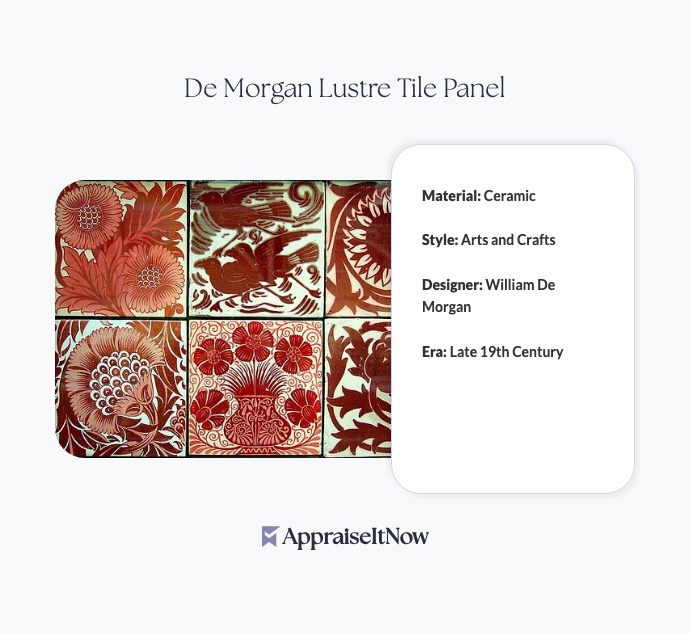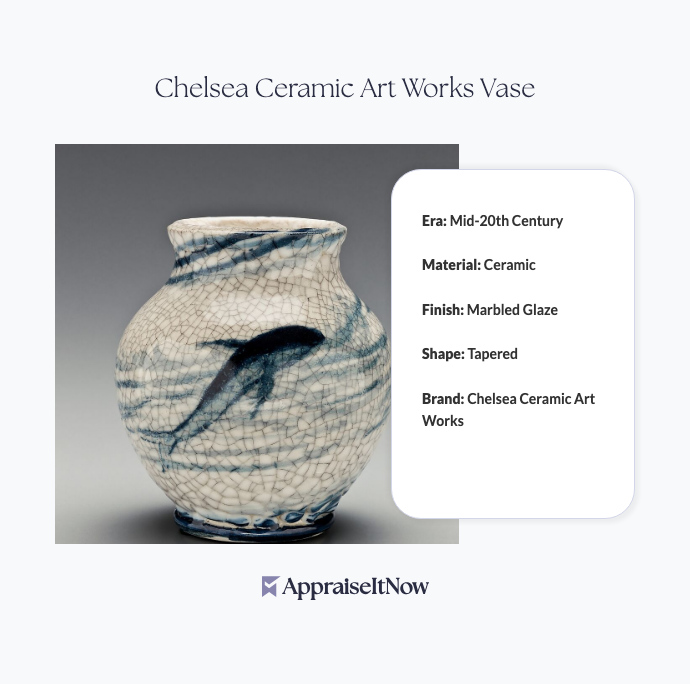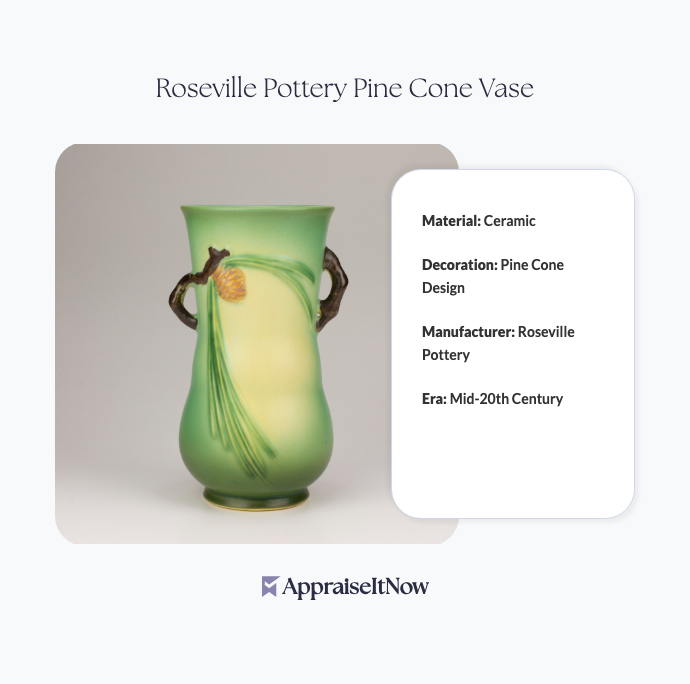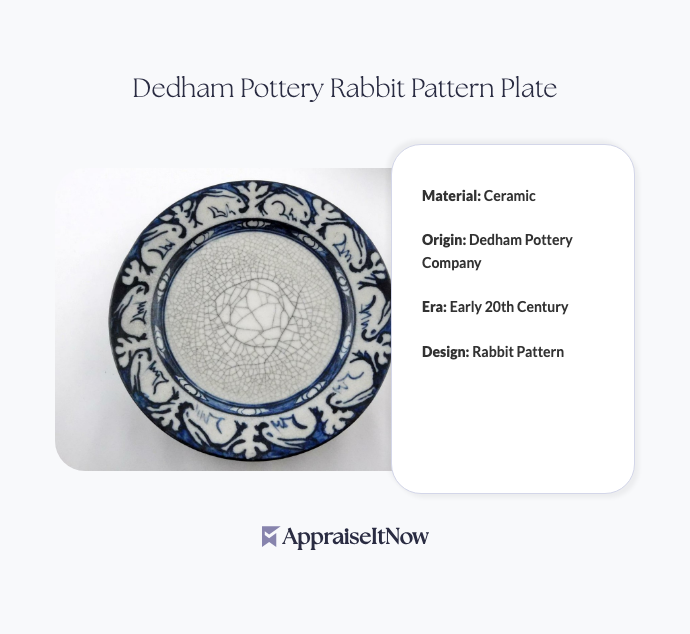<h1>How to Get Your De Morgan Lustre Tile Panel Appraised</h1>
<p>The De Morgan Lustre Tile Panel represents one of the most captivating pieces of Arts and Crafts ceramics, commanding market values between <strong>$1,800 and $3,200</strong> depending on condition, design intricacy, and provenance. If you're considering selling, insuring, or verifying the authenticity of a William De Morgan tile panel, understanding the appraisal process ensures you receive accurate valuation and proper documentation for any transaction or legal purpose.</p>
<h2>What Makes a De Morgan Lustre Tile Panel Valuable</h2>
<p>William De Morgan's pioneering work in ceramics during the 1880s established him as a visionary designer whose lustre glaze technique revolutionized decorative tile production. His panels feature the distinctive shimmering lustre glazes that were painstakingly developed through extensive experimentation, creating iridescent surfaces that catch light in mesmerizing ways. These panels served as architectural features in high-end homes and public buildings throughout the late 19th century, and their rarity combined with exceptional craftsmanship makes them highly sought-after among serious collectors.</p>
<p>The value of your De Morgan tile panel hinges on multiple interconnected factors. Collectors of <a href="/types/antique-artwork">antique artwork</a> understand that historical significance alone doesn't determine price—condition, provenance, size, and design intricacy all play crucial roles in final valuation.</p>
<div class="callout tip"><p><strong>Collector's Insight</strong></p>
<p>De Morgan panels with documented use in notable buildings or collections command significant premiums, sometimes 30-40% above comparable examples without clear provenance history.</p></div>
<h2>Key Factors That Influence Your De Morgan Panel's Appraisal</h2>
<h3>Condition and Glaze Integrity</h3>
<p>The physical state of your lustre tile panel directly determines its market position within the $1,800-$3,200 range. Appraisers examine multiple condition indicators that reveal both age and care history. Firing flaws, crazing (fine surface cracks in the glaze), and any restoration work significantly impact value. A panel with original glaze intact and minimal wear commands substantially higher prices than one requiring conservation work.</p>
<p>When evaluating condition, professionals look for repainting or overglazing attempts, which substantially reduce value since collectors prize original De Morgan surfaces. Even light crazing from natural firing processes—common in 19th-century ceramics—matters less than evidence of external damage or amateur restoration attempts. Examine your panel closely under different lighting angles to assess glaze uniformity and note any chips, cracks, or color loss for your appraiser.</p>
<h3>Provenance and Documentation</h3>
<p>Your De Morgan panel's history directly affects its value. If you can trace ownership back through documented collections, previous exhibitions, or published sources, expect a 20-35% value increase over an undocumented example. Professional appraisers verify provenance through auction house records, museum catalogues, dealer documentation, and academic references on Arts and Crafts ceramics.</p>
<p>The question of who previously owned your panel matters significantly. Panels from notable collections or with exhibition histories command stronger prices because collectors can verify authenticity and historical context. This mirrors how <a href="/blog/exploring-the-role-of-provenance-in-art-appraisals-assessing-historical-significance">artwork appraisals</a> place substantial weight on ownership chain documentation.</p>
<div class="callout note"><p><strong>Provenance Importance</strong></p>
<p>Even partial documentation—gallery labels, previous appraisals, family records—strengthens your panel's marketability and appraised value.</p></div>
<h3>Size, Design, and Production Rarity</h3>
<p>De Morgan tile panels vary considerably in scale and decorative complexity. Larger panels naturally command higher prices, while panels featuring his most intricate lustre designs or rare color combinations appeal to specialized collectors and may exceed standard valuations. The specific production run matters considerably—if your panel represents a limited series or experimental design, it holds enhanced value to museums and serious collectors.</p>
<p>Production scarcity information provides crucial context during appraisal. De Morgan produced fewer panels during certain periods, making those examples more valuable. Understanding whether your panel represents common production runs or rare experimental work directly influences its $1,800-$3,200 valuation position.</p>
<h2>Verifying Authenticity and Detecting Restorations</h2>
<p>Professional appraisers employ specialized techniques to confirm your De Morgan panel's authenticity and identify any restoration work. The lustre glaze's distinctive optical properties—its characteristic iridescence and depth—become apparent only under careful examination. Fake or heavily repainted panels lack the subtle light-play that distinguishes genuine De Morgan work.</p>
<p>Skilled appraisers examine firing marks on the reverse, surface microscopy of glaze consistency, and chemical composition testing when necessary. They identify overpainting by comparing glaze texture and color intensity across the panel's surface. For high-value examples, appraisers may recommend additional technical analysis including X-ray fluorescence (XRF) testing to verify glaze composition against known De Morgan specifications.</p>
<p>Documentation requirements for authentication typically include high-resolution photographs from multiple angles, detailed close-ups of signature marks or maker's impressions, and clear images of the reverse side. These photographs become essential for insurance purposes and help appraisers conduct comparative analysis with documented examples in museum collections.</p>
<h2>Recent Auction Results and Market Comparables</h2>
<p>Understanding recent De Morgan sales helps position your panel within the current market. Auction results and private sales data show consistent demand from collectors, particularly for panels with exceptional design or documented provenance. Recent comparable sales inform professional appraisers' valuations and help explain market positioning to buyers or insurance companies.</p>
<p>When seeking professional valuation, reputable appraisers research recent comparable sales through auction house records, dealer inventories, and collector networks. This comparative market analysis ensures your appraisal reflects current demand and recent price trends rather than outdated information. The lustre tile market has shown steady appreciation, with well-documented examples maintaining or increasing value over time.</p>
<h2>Preparation for Professional Appraisal</h2>
<p>Preparing your De Morgan panel for appraisal maximizes the information available to professional experts. Compile all documentation you possess—family records about acquisition, previous appraisals, insurance valuations, auction lot descriptions, or exhibition materials. Photograph your panel professionally in natural light from multiple angles, capturing any markings, signatures, or identifying features clearly.</p>
<p>For online appraisal services like <strong>AppraiseItNow</strong>, you'll submit these photographs along with detailed descriptions of size, condition observations, and any known history. This documentation allows credentialed appraisers—including those with certifications from AAA, ISA, ASA, and CAGA organizations—to provide accurate valuations without requiring in-person inspection for most circumstances.</p>
<div class="callout tip"><p><strong>Preparation Tip</strong></p>
<p>Include photographs of the panel's reverse side, any maker's marks, signature areas, and detailed close-ups of glaze texture and color. This documentation strengthens your appraisal's credibility and market defensibility.</p></div>
<h2>When In-Person Inspection Becomes Necessary</h2>
<p>While online appraisal services handle many De Morgan valuations effectively, certain situations warrant in-person expert evaluation. If your panel shows significant damage, multiple restoration attempts, or if its value exceeds $5,000, professional appraisers typically recommend personal inspection to verify condition details and authenticity conclusively. Disputed ownership, estate settlement disputes, or insurance claims involving high-value ceramics often require detailed in-person documentation.</p>
<p>Learn more about <a href="/blog/appraising-fine-porcelain-and-ceramics-valuing-delicate-artistry">appointing the right expert for ceramic and decorative arts appraisals</a> to ensure you receive thorough, credentialed assessment matched to your specific situation.</p>
<h2>Appraisal Report Types and Their Uses</h2>
<p>Different appraisal report formats serve distinct purposes. Insurance replacement value appraisals document what it would cost to replace your panel with a comparable example today—typically the most comprehensive valuation for coverage purposes. Fair market value appraisals establish what a willing buyer would pay a willing seller, commonly used for estate settlement or tax purposes. Consignment or sale valuations position your panel accurately in the current market for dealer representation.</p>
<p>Choose your appraisal type based on intended use. Selling privately or through auction? A fair market value appraisal provides credible documentation. Updating insurance coverage? Insurance replacement value reporting ensures proper protection. Estate settlement requiring tax documentation? Fair market value appraisal satisfies IRS requirements. Professional appraisers guide you toward the appropriate report type for your specific needs.</p>
<h2>Preparing Your De Morgan Panel for Sale or Transport</h2>
<p>Once appraised, proper handling protects both your panel's condition and its documented value. De Morgan tiles require careful packing for shipping—movement or impact risks damaging the glaze and reducing value. Climate-controlled storage prevents humidity fluctuations that cause crazing or glaze instability. Insurance documentation from your professional appraisal ensures adequate coverage during transport and storage.</p>
<p>Before sale or significant shipment, photograph your panel in detail for documentation purposes. This creates a visual record of its condition at appraisal time, protecting your interests if disputes arise. Work with professional art shippers experienced in ceramics transport, as their expertise prevents damage that would reduce your panel's market value and contradict your appraisal documentation.</p>
<h2>Understanding Special Considerations and Legal Issues</h2>
<p>Certain De Morgan panels carry special status considerations affecting saleability and valuation. If your panel comes from a museum collection or carries suspected cultural heritage significance, legal restrictions may apply to export or sale. Some jurisdictions impose export regulations on significant historical artworks, potentially affecting your ability to sell internationally or to certain buyers.</p>
<p>Professional appraisers familiar with <a href="/blog/appraising-fine-glass-and-crystal-valuing-delicate-glassware-and-artistic-creations">fine and decorative arts</a> valuations understand these legal complexities. They can flag potential issues during assessment and recommend consultations with legal experts when necessary. Transparent disclosure of any questionable provenance or legal concerns protects you from liability and ensures smooth transactions.</p>
<h2>Appraisal Fees and Turnaround Times</h2>
<p>Professional appraisal fees for De Morgan tile panels typically reflect their market value and complexity. Standard online valuations through established services like <strong>AppraiseItNow</strong> often cost $200-$500, with turnaround times of 5-10 business days. More detailed evaluations or in-person inspections command higher fees, justified by the comprehensive documentation and expert time involved.</p>
<p>Why might appraisal costs reach $2,500 or more? Exceptionally high-value panels, disputed authenticity requiring extensive research, complex provenance investigation, or specialized conservation assessment justify premium fees. Think of it as insurance on your panel's true value—a thorough, credentialed appraisal protects your interests far more than its cost, whether you're buying, selling, or insuring a significant investment.</p>
<div class="callout note"><p><strong>Key Takeaway</strong></p>
<p>A professional appraisal of your De Morgan Lustre Tile Panel provides essential, defensible documentation whether you're selling, insuring, or settling an estate. By understanding the factors that influence value—condition, provenance, rarity, and design—you can approach appraisal with confidence, knowing your panel's worth is accurately assessed by credentialed experts who specialize in Arts and Crafts ceramics and historical decorative arts.</p></div>







.avif)







